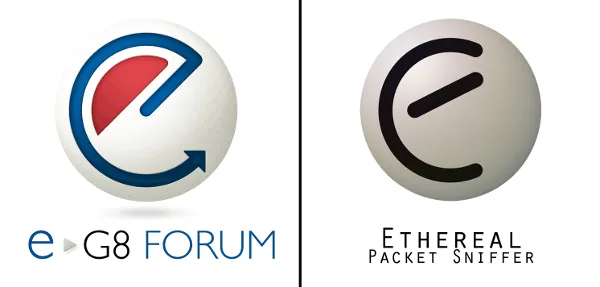Where did the eG8 sniff this ?
The digital realm presents various tools that can be harnessed for diverse objectives, depending on the intentions of the user. One such tool is a packet sniffer, a software that inspects the content of packets – the small sets of information bits transmitted over the Internet. While packet sniffers can serve noble purposes such as debugging or optimizing protocols, they can also be used controversially for interception, prioritization, filtering, or policing networks. This paper delves into the functionalities and ethical implications of packet sniffers, with a focus on the renowned open-source packet sniffer, Ethereal, and its ostensible link to the eG8 logo.
Packet sniffers, often seen as mysterious and arcane tools, have diverse applications. Their utility is largely determined by the motivations and intentions of the user. However, the fine line between ethical usage and potential abuse of these tools sparks an intriguing discourse on their societal implications.
Understanding Packet Sniffers
Packet sniffers are software tools used to inspect the content of data packets transmitted over the Internet. These small sets of information bits form the backbone of online communication, enabling the exchange of data across vast digital networks. Packet sniffers can help identify network bottlenecks, troubleshoot connectivity issues, and optimize data transmission protocols.
Dual Nature of Packet Sniffers
Packet sniffers can serve noble ends, such as debugging network issues or enhancing data transfer efficiency. However, their ability to analyze network traffic makes them controversial. They can be manipulated for malicious purposes like data interception, network traffic prioritization, content filtering, or even network policing. This dual nature raises ethical and legal concerns about their usage.
Ethereal: The Iconic Packet Sniffer
Ethereal, a recognized open-source packet sniffer, symbolizes this paradox. As a powerful network protocol analyzer, Ethereal allows users to see what is happening on their networks at a microscopic level. Its capabilities make it a vital tool for network professionals but also a potential instrument for network surveillance if misused.
The eG8 Logo Controversy
The eG8 logo bears a notable resemblance to the Ethereal logo, sparking discussions around potential copyright infringement. Whether this similarity is a deliberate imitation by Publicis teams or merely a coincidence is a matter of debate. This controversy also serves to highlight the broader issue of intellectual property rights in the realm of art, design, and invention where the line between “new” ideas and existing ones often blurs.

| Section | Key Concepts | Highlights |
|---|---|---|
| Introduction | Packet Sniffers | Discussed the diverse applications and ethical implications of packet sniffers. |
| Understanding Packet Sniffers | Packet Sniffers, Data Packets | Explained the role and operation of packet sniffers in inspecting data packets on the Internet. |
| Dual Nature of Packet Sniffers | Ethical Issues, Network Security | Analyzed the ethical issues arising from the potential misuse of packet sniffers for data interception, traffic prioritization, content filtering, or network policing. |
| Ethereal: The Iconic Packet Sniffer | Ethereal, Open-Source Tools | Described Ethereal as an exemplar packet sniffer, its utility, and potential misuse. |
| The eG8 Logo Controversy | eG8, Logo Design, Intellectual Property Rights | Highlighted the controversy surrounding the resemblance between the eG8 and Ethereal logos, sparking a discussion on intellectual property rights in design and innovation. |
| Conclusion | Digital Ethics, Internet Governance | Stressed the importance of ethical usage and stringent governance of digital tools, setting the stage for future discussions in the digital realm. |
